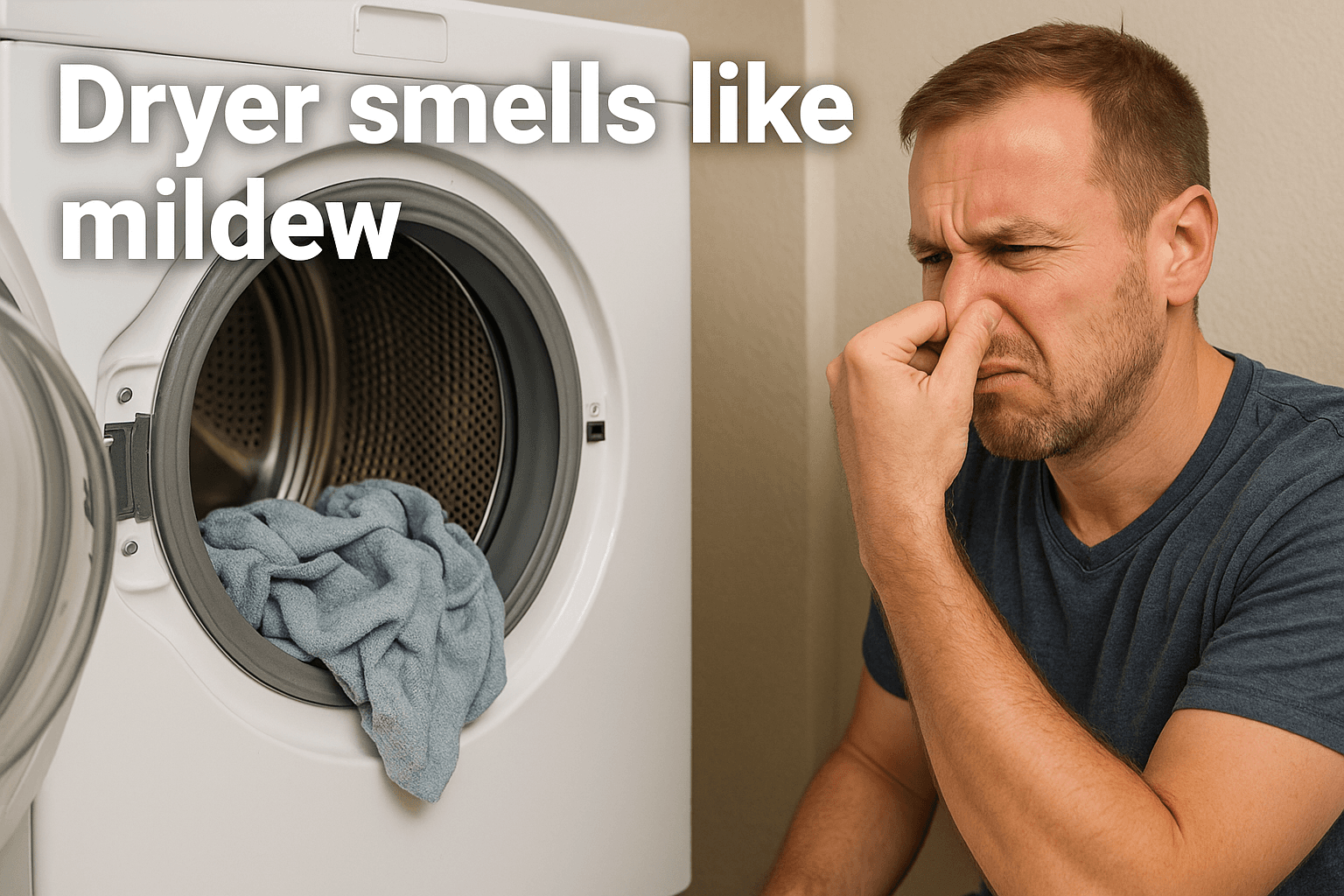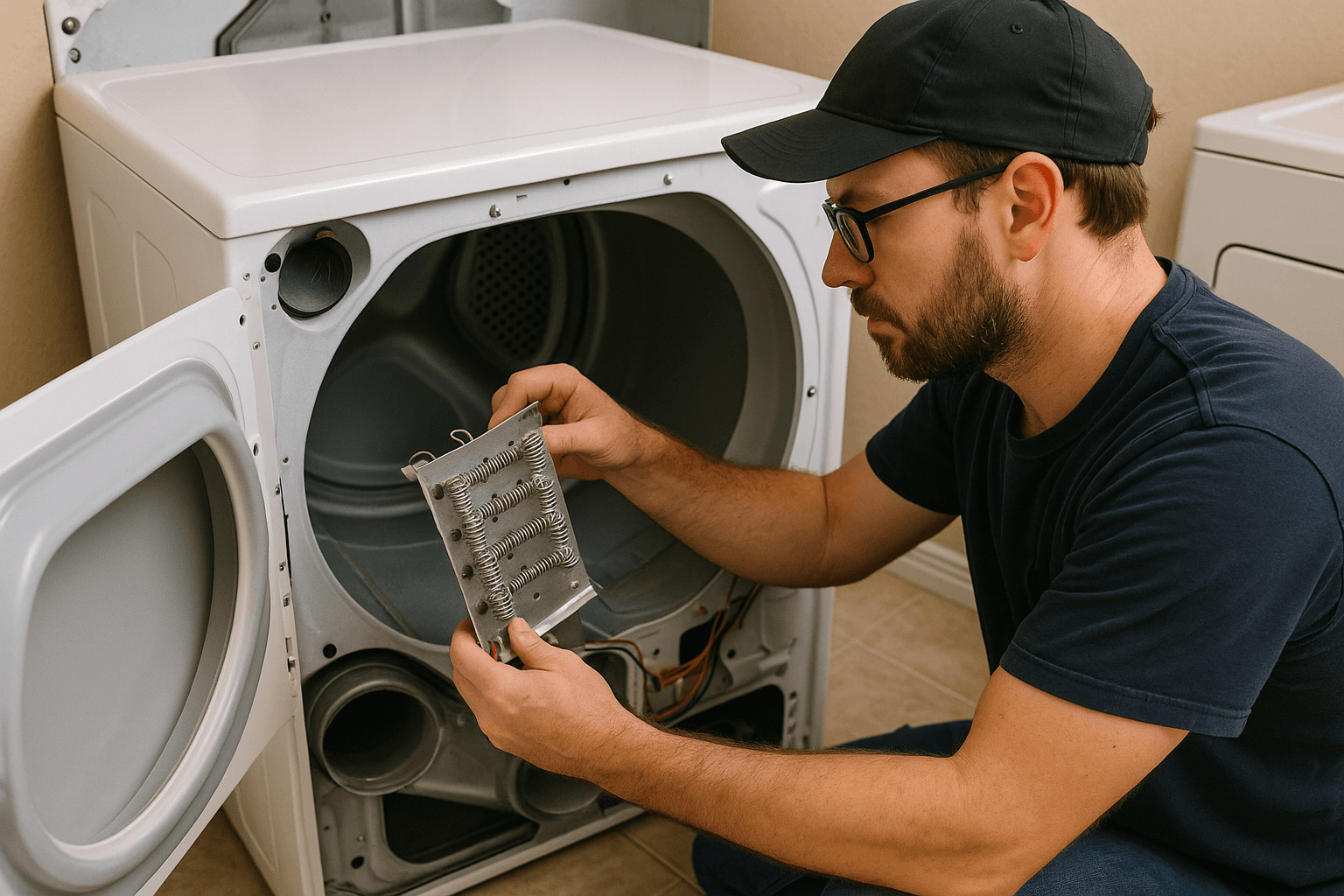Review
5 Types of Dryer Vent Hose - Which is the Best Choice?
AZparts Team
Updated on November 19, 2025
6 min read
Choosing the right dryer vent hose is more important than you think. Each dryer vent hose type affects your dryer's efficiency and safety differently. In this article, AZParts will introduce the most common types of dryer vent hose, compare their pros and cons, and help you pick the best fit.

1. What Is a Dryer Vent Hose?
A dryer vent hose is a tube, usually flexible, semi-rigid, or rigid that connects your dryer to an exterior vent. It carries hot, moisture-laden air from the dryer to the outside, preventing damp air from accumulating indoors.
A quality vent hose can:
- Improve airflow, helping the dryer run more efficiently
- Shorten drying times, reducing energy use and costs
- Enhance safety, by limiting lint buildup and fire risk
Tip: Some homes use ventless dryers, which don’t require a hose. Instead, they condense moisture into water and drain it away. While these models are space-saving and convenient, they tend to dry clothes more slowly and may not be ideal for heavy or frequent use
2. Common Types of Dryer Vent Hoses
Understanding the different dryer vent options is essential for selecting the best type of dryer vent based on your space, safety requirements, and dryer setup. Below are the most common options, each with its own pros, cons, and ideal use cases.
2.1. Aluminum Foil Duct
Overview: The aluminum foil duct is a flexible, accordion-style vent hose made from thin aluminum foil and reinforced with coiled wire. It’s commonly used as a transition duct, connecting the dryer to the wall vent. While it's easy to work with and inexpensive, it’s not suitable for in-wall or long-term concealed installations due to safety concerns.
Pros:
- Affordable: One of the most cost-effective duct types
- Flexible: Easy to maneuver in tight spaces
- DIY-friendly: Quick to install with basic clamps
Cons:
- Lint accumulation: Ribbed design traps lint easily
- Fire risk: Punctures and clogging can create hazards
- Not up to code for concealed or long-term use
Best for: Short, visible connections in open areas where safety monitoring is possible.
Flexible aluminum foil duct for dryer vents (Source: AZParts)
2.2. Semi-Rigid Metal Duct
Overview: Made of aluminum, this semi-rigid duct offers better durability and smoother airflow than foil ducts. It’s still flexible enough for tight setups but only allowed as a transition duct (not inside walls).
Pros:
- Better airflow: Smoother interior reduces lint retention
- More durable: Stronger and crush-resistant compared to foil
- Easy to clean: Clamps make removal simple for maintenance
Cons:
- Crushable: Can dent or deform if not handled properly
- Limited use: Not suitable for concealed runs or sharp bends
Best for: Short dryer-to-wall connections where better airflow and durability are needed.
Semi-Rigid Metal Dryer Vent Duct which durable and Efficient Airflow Solution (Source: AZParts)
2.3. Rigid Metal Duct
Overview: The most durable and safest option, rigid metal ducts are made of aluminum or galvanized steel and have a completely smooth interior. They are the only ducts allowed inside walls or floors under most building codes.
Pros:
- Superior airflow: Minimal friction, low lint buildup
- Highly durable: Ideal for long, permanent installations
- Code-compliant: Approved for in-wall and ceiling use
Cons:
- Challenging install: Requires precise measurements and elbow fittings
- More expensive: Higher material and potential labor costs
Best for: Long, concealed duct runs behind walls or in ceilings, ideal for permanent solutions.
Galvanized Steel Rigid Dryer Vent Duct (Source: AZParts)
2.4. Slim Duct / Periscope Duct
Overview: A space-saving venting solution, slim ducts are flat, rigid metal tubes designed to fit behind dryers in tight spaces. They often have adjustable lengths and round collars on each end.
Pros:
- Space-efficient: Allows dryer to sit closer to the wall
- Durable: Made from rigid aluminum
- Versatile: Fits vertical, horizontal, or angled setups
Cons:
- Difficult to install: Requires exact alignment and sometimes custom tools
Limited capacity: Smaller volume may restrict airflow
Best for: Apartments, small laundry closets, or installations with minimal clearance.
Slim Profile Periscope Dryer Vent Hose (Source: AZParts)
2.5. Plastic or Vinyl Duct
Overview: Plastic or vinyl dryer ducts were once commonly used, but today they’re considered a serious safety hazard. Their soft, ribbed surfaces not only trap lint easily but are also flammable, making them a poor choice for venting hot air from your dryer.
Why You Should Avoid Them:
- High fire risk: These ducts can catch fire quickly if lint builds up.
- Not up to code: Most building regulations no longer allow them.
- Poor performance: Their flexible design restricts airflow and increases lint buildup.
Best For: None. These ducts are outdated and unsafe. For the safety of your home and family, it’s best to replace them with safer alternatives like aluminum or semi-rigid metal ducts.
Plastic or Vinyl Dryer Vent Hose (Source: AZParts)
3. Which Dryer Vent Hose Should You Use?
Type | Key Features | Advantages | Disadvantages | Best For | Example Product |
Rigid Metal Duct | Rigid, smooth metal tubing | Excellent airflow, fire-resistant, very durable | Less flexible, harder to install in tight spaces | Long duct runs, maximum safety | Ductmate 4-inch Rigid Metal Duct |
Slim Metal Duct | Thin, flat metal duct for tight spaces | Space-saving, fire-resistant | Slightly lower airflow than rigid metal | Tight spaces, close to walls | Whirlpool Slim 4-inch Metal Duct |
Semi-Flexible Metal Duct | Semi-rigid metal, flexible tubing | Flexible, heat-resistant, less lint buildup | Less durable than rigid, medium airflow | Transition sections near dryer | Deflecto 4-inch Semi-Rigid Duct |
Foil Duct | Thin, lightweight aluminum foil | Inexpensive, easy to install | Tears easily, traps lint, flammable | Temporary or short-term use | Master Flow Foil Dryer Vent Hose |
Plastic/Vinyl Duct | Flexible plastic/vinyl tubing with ribs | Cheap, flexible | High fire risk, melts under heat | Not suitable | Not suitable |
Dryer vent hose suits for each demands and appliances (Source: AZParts)
Read more: How to Install Dryer Vent Hose with 6 Simple Steps
4. FAQs about Dryer Vent Hose Types
4.1. What type of dryer vent hose should I use?
The best type of dryer vent hose depends on your setup. For most homes, a rigid metal duct is the safest and most efficient option. For short, visible connections, a semi-rigid metal hose is also a good choice. Avoid plastic or vinyl hoses, as they pose serious fire risks.
4.2. Which is better: a flexible or rigid dryer vent hose?
Rigid dryer hoses are better in terms of airflow, durability, and safety. They have smooth interiors that reduce lint buildup. Flexible hoses (like foil or semi-rigid) are easier to install but should only be used for short, exposed runs.
4.3. Are dryer vent hoses universal?
No, most dryer vent hoses use a standard 4-inch diameter, making them compatible with most dryers and vent outlets. However, the material and length can vary, so it's important to choose a hose that matches both your appliance and building code requirements.
4.4. Is it better to clamp or tape a dryer vent hose?
Clamps are recommended for securing dryer vent hoses because they provide a firm, adjustable hold and make removal easy for cleaning. If needed, use UL-listed foil tape to reinforce joints; never use regular duct tape, which can dry out and fail under heat.
Knowing the different types of dryer vent hoses is key to making a smart, efficient, and safe decision for your home. Each type offers distinct benefits depending on your space and installation needs. Selecting the right one not only enhances your dryer's performance but also helps create a safer living environment. For all your dryer repair needs, find high-quality dryer parts at AZParts to keep your appliance running smoothly and safely.
Contact Information:
- 8 The Green, Ste A, Dover, Delaware 19901-3618, United States
- support@azparts.com
Read more:
Dryer
Further Reading
Further Reading





